Do your kids love playing video games? Of course they do! They’re fun and all, but what if gaming could be more than just entertainment? What if playing video games could also teach your child how to regulate their emotions better and even help improve your family’s functioning too?
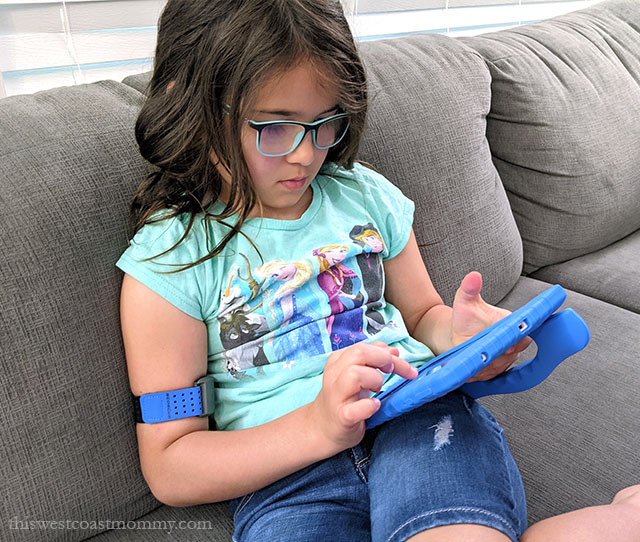
As a registered social worker in the public health system, I know first-hand that a lot of families are struggling to support their kids with tantrums, aggressive behaviour, autism, ADHD, and other behavioural concerns. Since the pandemic started, we’ve seen even more children struggling with isolation, stress, anxiety, and other mental health challenges.
Like so many others right now, my own children have also been struggling with some really big feelings during this pandemic, and that has led to increased difficulty regulating their emotions and behaviours. Over the past year and a half, my 8 and 11-year-old daughters have been displaying a lower frustration tolerance, increased anxiety, and more meltdowns. Things have been especially difficult for us since we experienced two very significant losses this spring – the deaths of my daughters’ grandmother and of our dog, Kallie.
When kids are struggling like this, they often need help learning how to manage those feelings. There are many strategies that can help with this, but Mightier is a different kind of tool in our toolbox!
What is Mightier?
Designed for children aged 6-12, Mightier is a new way to help kids navigate big emotions and learn lifelong calming skills. Mightier pairs video games with a heart rate monitor that lets kids see their heart rate, in real time, right on the screen. During gameplay, children practice clinically validated strategies that help them build self-confidence, learn to regulate their emotions, and support healthy relationships.
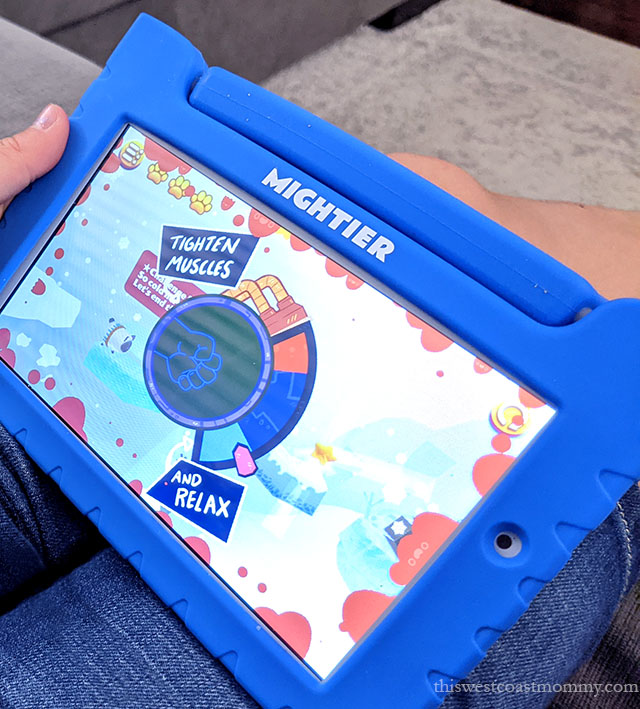
I was curious to see if Mightier could help my kids develop better self-regulation skills. Observing their own heart rate and learning to control it in the moment is kind of an “Aha!” realization that lets kids understand and appreciate what deep breathing and other self-regulation strategies can do for them. I was particularly excited about the possibility that the heart rate monitor might help them learn to identify their own internal, physiological cues of frustration and anxiety earlier – before the meltdown.
Read more: 12 Simple Ideas to Help Your Child Calm Down
In The Box
The key component of the Mightier system is the heart rate monitor that integrates your child’s physiological response into a robust library of video games. You can either use your own tablet (check if your tablet is compatible here) or purchase a dedicated Android tablet that comes with Mightier pre-installed. Shipping is free to Canada and the US.
The blue Mightier box is emblazoned with acorns as a reminder that the smallest acorn can grow into a mighty oak tree! Inside is everything you need to get started:
- Get started guide
- Tablet and charger
- Sturdy silicone tablet case with handle
- Heart rate monitor and charger (with small and large armband)
- Heart-shaped squeeze ball
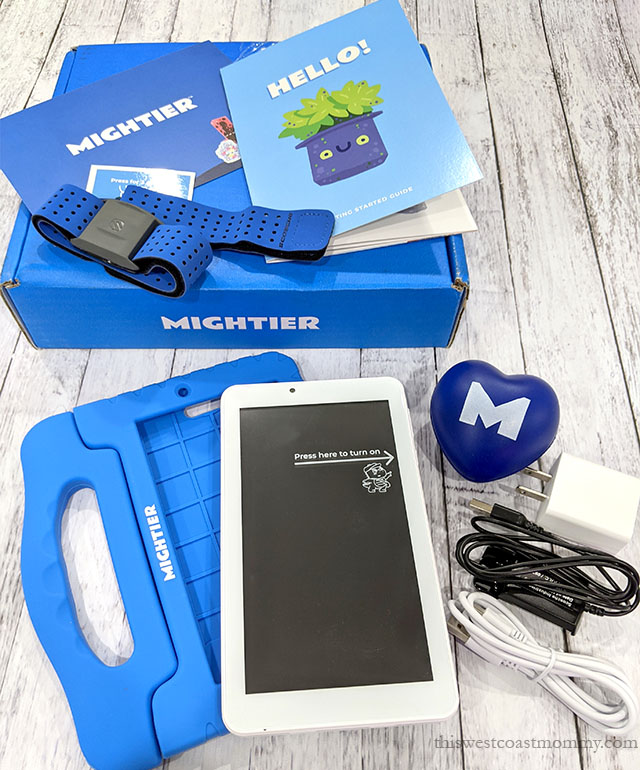
Setting up the tablet that arrived from Mightier was very straightforward. Once I charged the tablet and connected to wifi, it automatically loaded up the Mightier app and walked me through creating individual accounts for each of my daughters. If you’ve got multiple children, you only need one Mightier system and subscription. You can set up a separate account for each child in your family that saves their individual progress.
If you use your own tablet you’ll need to download the app yourself, but the instructions are pretty simple. If you do need help with it though, you’re not on your own. Mightier’s Family Care Team is always available if you’re having technical issues or need a little more help in setting up and getting started with Mightier.
Parents can use the web-based parent dashboard to track time played, how many times their child’s heart beat increased, how many times they cooled down, and which game they played most that week. The website also carries some great educational resources for parents looking for more support or for ways to connect with their kids.
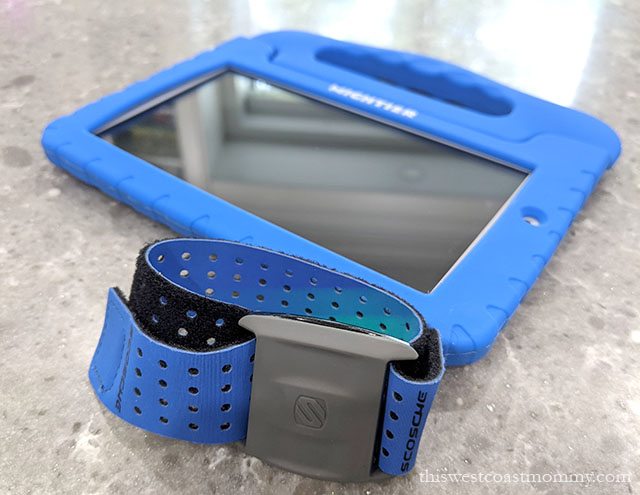
How Does Mightier Work?
Mightier works by having kids wear a heart rate monitor on their upper arm as they play fun and appealing mini games. As their heart rate increases, the games get more challenging. This encourages them to practice calming themselves down in the moment and learn how to bring their own heart rate back down.
To start, kids focus on figuring out how to play the games (26 different ones at last count), try out techniques for raising and lowering their heart rate, and discover that they can actually control their heart rate. Mightier helps children learn to manage their own physiological responses by guiding them through these four key strategies:
- Deep Breathing. Taking deep breaths increases the amount of oxygen to the brain and body, which in turn stimulates the parasympathetic nervous system and helps them feel more calm.
- Crossing the Midline. Crossing one part of the body to the other side requires the right and left hemispheres of the brain to communicate across a thick band of nerve fibers called the corpus callosum. Activating the corpus callosum strengthens the connection, which makes it easier for their brain to process information, perform tasks, manage emotions, and regulate activities such as breathing, speech, and physical activity.
- Progressive Muscle Relaxation. Since muscle tension is the body’s response to anxiety-provoking thoughts, first tensing then relaxing different muscles groups helps to alleviate anxiety and lower their heart rate.
- Tracing/Visualization. This simple, low-arousal activity can help focus the mind and lower their heart rate.
These tools are all evidence-based strategies proven to promote self-soothing and emotional regulation. Kids can also substitute their own calm down strategies like cuddling with their favourite stuffy, petting the family dog, doing a yoga pose, lying on the floor, or any other technique that works for them.
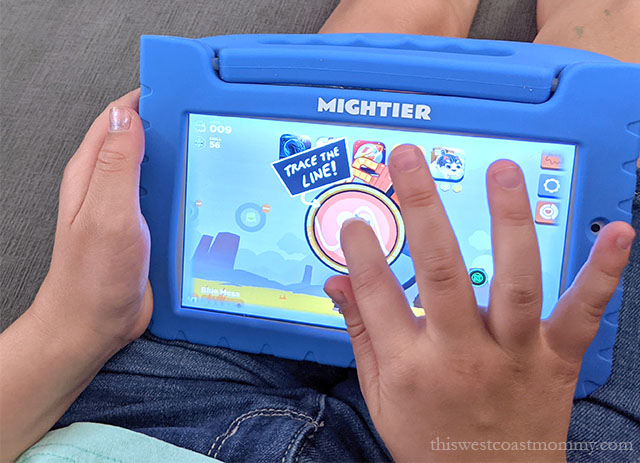
As with any kind of intervention, the first hurdle is getting kids engaged in the process. Gamifying these skills like Mightier has done is a genius way to get kids interested and practicing. The neat thing about Mightier is it helps kids really understand and visualize their emotions. The heart rate monitor lets kids see right on the screen how their feelings affect their body, and vice versa.
There are several ways that Mightier succeeds in gamifying this practice to motivate kids to keep playing and practicing their newfound skills. First and foremost, it’s video games! That’s not a hard sell in my house. On top of that, every successful cool down goes towards “icing” and capturing little, fiery collectible monsters called Lavalings. As Pokemon has shown us, the urge to catch ’em all is strong. There are 26 games (at last count) but only 5 of them are available to play on any particular day. This limit encourages kids to come back the next day so they can swap them out for new games.
Mightier isn’t just about teaching your child strategies to use when they get into the red, it’s about practicing those strategies enough so that their brain and body begin to cool down automatically.
As kids continue to play, they feel proud of their accomplishments in Mightier and growing expertise in controlling their heart rate. When kids feel proud and confident, they’re more likely to start trying out their new skills in real life.
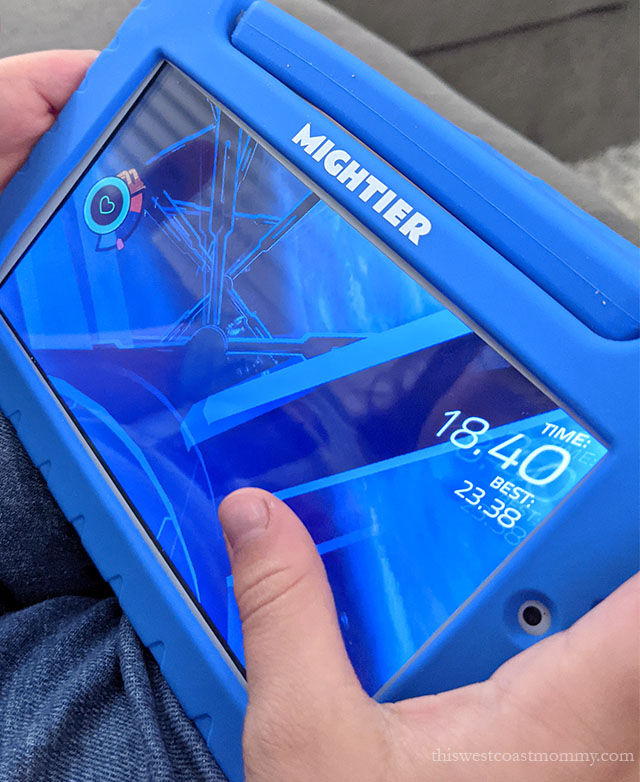
Eventually, kids will begin to apply this learning in other areas of their lives. You may see them pause to take a breath or use one of their strategies in a challenging situation. Mightier calls this the translation phase, and suggests this can come within 3 months, though other children may take longer of course.
Does Mightier Work?
Trials at Boston Children’s Hospital and Massachusetts Grand Hospital showed that children using Mightier technology and therapy reduced symptoms of aggression, oppositional behavior, and parent stress compared to children receiving control treatment. More importantly, 87% of families using Mightier report improvement in their child’s behaviour after 4 months.
87% of families report improvement in their child’s behavior after 4 months.
Mightier suggests aiming for about 45 minutes of practice time a week for best results. To be honest, most weeks we didn’t reach this goal. Even so, I’ve noticed a difference. It took a little longer for us, but even without meeting that weekly goal, we’ve still had fewer tantrums. And when my kids do get upset, they tend to calm down more quickly than before.
The most exciting thing I’ve noticed is my youngest daughter pausing, closing her eyes, and taking deep breaths when she’s frustrated, just like Mightier teaches. When she’s having a difficult time, she will sometimes go to her room to play some Mightier and she’s in a much better space afterward!
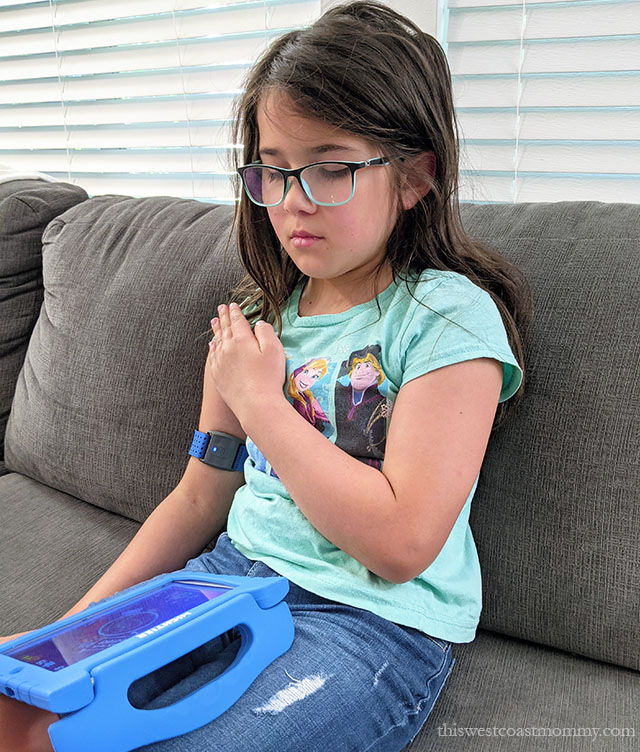
A lot of counselling teaches skills in the office and leaves children to apply them at home in a highly charged environment when they’re already feeling upset or frustrated. Mightier is a fantastic way to get kids to learn and practice these same calm down skills in a safe and fun environment. It won’t replace a good counsellor or behavioural consultant, but I do think this would be a valuable resource for families who need help, and if you’re already working with a therapist, a worthwhile addition to your treatment plan.
How Long Will the Benefits Last?
Since this article was published, a few people have asked if my kids have maintained their skills. It’s been around 6 months since I first published this post, and I’m pleased to share that I still see them use their skills, particularly the deep breathing they’ve learned and practiced using Mightier. Sometimes they need a little reminder to stop and take deep breaths, but I do think Mightier has made a difference for us.
Get Mightier!
If you’re ready to see if Mightier can make a difference for your family too, visit Mightier.com for more information about the program and to purchase your membership. If you’re still not sure, Mightier offers a 30-day guarantee. That means that if you decide that this program isn’t a good fit, they will refund your money and even provide free return shipping!
Mightier offers three different membership plans:
- Monthly membership: $40/mo
- 6-month membership: $34/mo, billed $204 every 6 months
- Annual membership: $28/mo, billed $336 annually
Disclosure: I received sample items to facilitate this post. All opinions expressed are completely honest and my own, based on my personal experience. Your experience may differ.



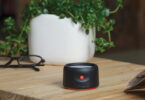



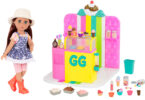
I wonder if something like this would help with my son’s ADHD? He gets frustrated a lot but mostly w himself because he feels like he messed up something.
This is so cool! Love that you are using a tabled and video games for this!
This is such an interesting concept! I’d never heard of something like this before.
Wow I had no idea this existed! As a mom of a special needs daughter with behavioral concerns this might be a really great tool for her to try. I do think the price seems a little high honestly, but I’d for sure give it a go for a month and see if it made an impact. I bet it would!
Unfortunately, we had a really negative experience with the Mightier tablet. The tablet was clunky and lowering our heart rate didn’t seem to have any impact on the games. My kids found it super frustrating and hated it, and then Mightier was a huge pain about giving us a refund.
This is interesting I never heard of this before.
Emotional regulation is one of the executive functions, so many people with VAST (variable attention stimulus trait, ADDitude magazine’s suggestion for a more accurate and less pathological name for ADHD) may benefit from this. Not everybody has that symptom, and some who have it don’t know it! It’s not designed to help with the other executive function differences (interest-based attention and time perception, hyperfocus, abundant creativity, dopamining, etc.) commonly associated with NCPM (nonlinear cognition and perception mutation, my suggestion for an alternative to the inadequate, inaccurate label ADHD)